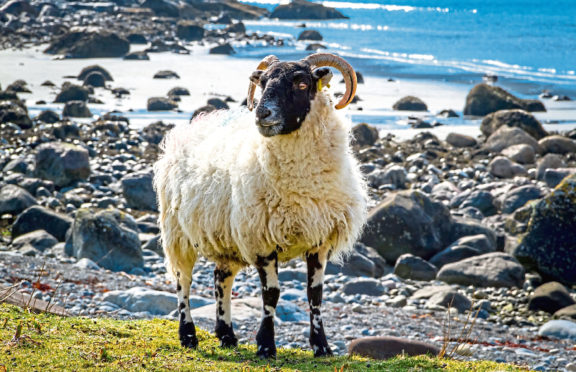With only one month to the end of the Brexit transition period, it should be clear about what this means for rural Scotland, so it is dismal that the governments of the three devolved nations have had to write to the UK Government asking what the plan is.
And at the time of writing, there has been no deal with Europe announced which is making it look increasingly likely that there will be a negative impact on our livestock trade.
It is perhaps not a surprise that a poll taken at AgriScot 2020 had 75% vote stay and only 20% leave, were the referendum to be run again.
Much to crofters’ chagrin it was announced that the promised reform of the Less Favoured Areas Support Scheme (LFASS) wouldn’t go ahead after all and will continue to pay more per hectare, the better the ground.
As most of Scotland is designated Less Favoured Area (LFA) this means relatively good land in the Black Isle, Aberdeenshire and Ayrshire, for example, gets a much higher per-hectare payment than that in the severely disadvantaged areas of the crofting counties.
Furthermore, the convergence uplift – a rebate meant to compensate those on very low payments – will be taken to cover the even higher penalty the Scottish Government incurred for continuing to use LFASS this year.
The original intention of external convergence was to ensure a more equal distribution of direct agricultural support between European member states.
This meant member states that had direct payments per hectare below 90% of the European Union average were to get extra money to close the gap between their level and this average.
The UK qualified for an uplift because of Scotland’s low average, hence our fight to get the UK rebate to be allocated entirely to Scotland.
Scotland has a low average due to very low per-hectare payments to crofters and hill farmers on rough grazing – Regions 2 and 3 land.
It would be logical and just therefore that the uplift goes to them, there being no justification for any of it going to Region 1, which already receives high payments.
If we correct figures given by the Scottish Government to be in line with the EU formula, we find that Region 1 is about 111% of the EU average or 123% of the 90% threshold.
However, the Scottish Government disregarded the intention of the rebate and allocated a large proportion of the first tranche to Region 1.
The first tranche distributed £90 million of the £160m, leaving £70m for the second tranche, due early in 2021.
The Scottish Government intend to use it to fill the LFASS deficit.
The penalty incurred is that only 40% of the 2018 LFASS budget of £65m can be paid for 2020 – a deficit of nearly £40m.
Now, the figures as to who gets what are complicated, but you can see that there is not a lot of convergence rebate left for those who deserve it.
The Scottish Crofting Federation (SCF) reiterates the assertion that the convergence money exists to compensate producers who have received very low per-hectare payments.
The LFASS gap will need to be filled, but from elsewhere. There is still considerable resentment in crofting communities about the way in which the uplift has been misused.
- Patrick Krause is chief executive of the Scottish Crofting Federation.
